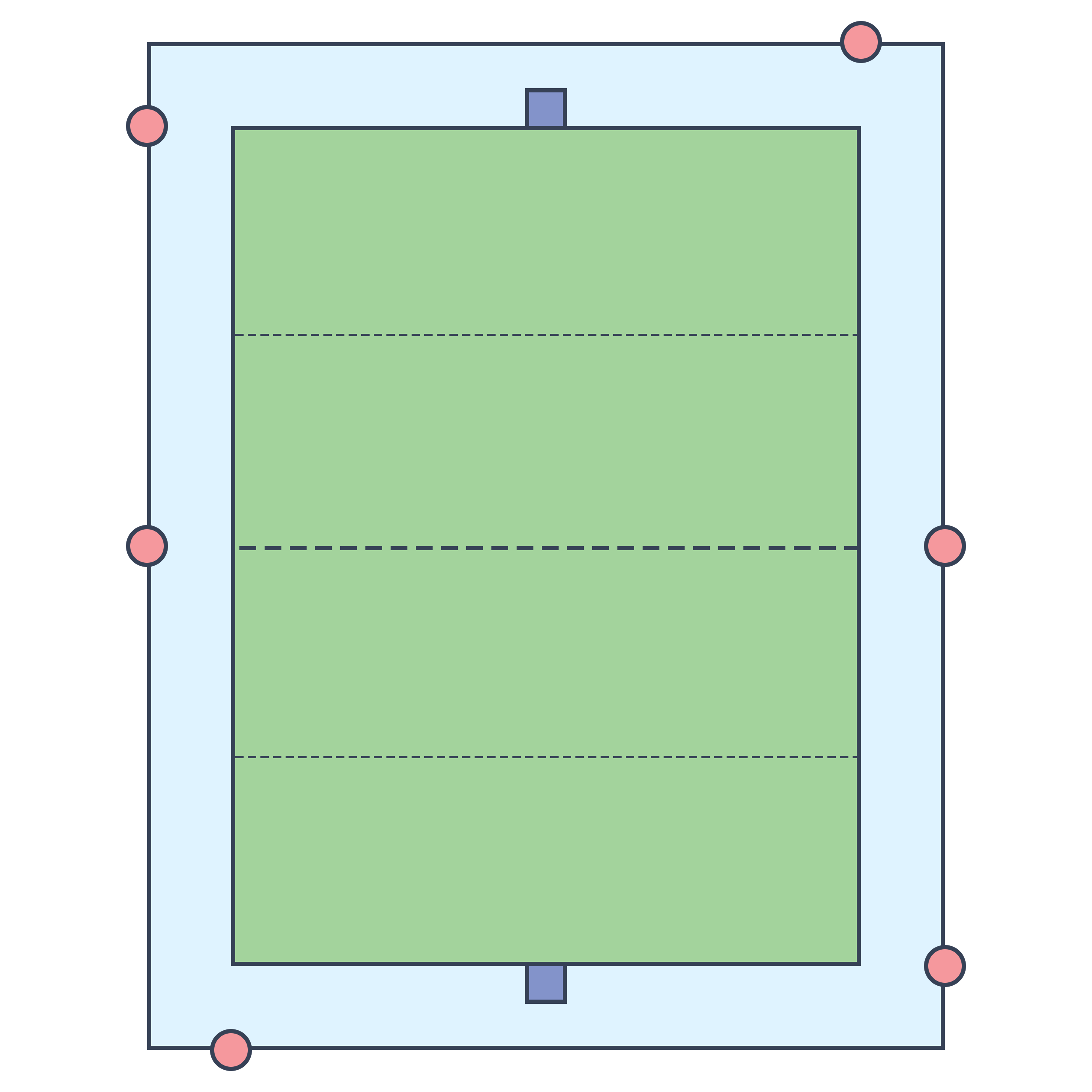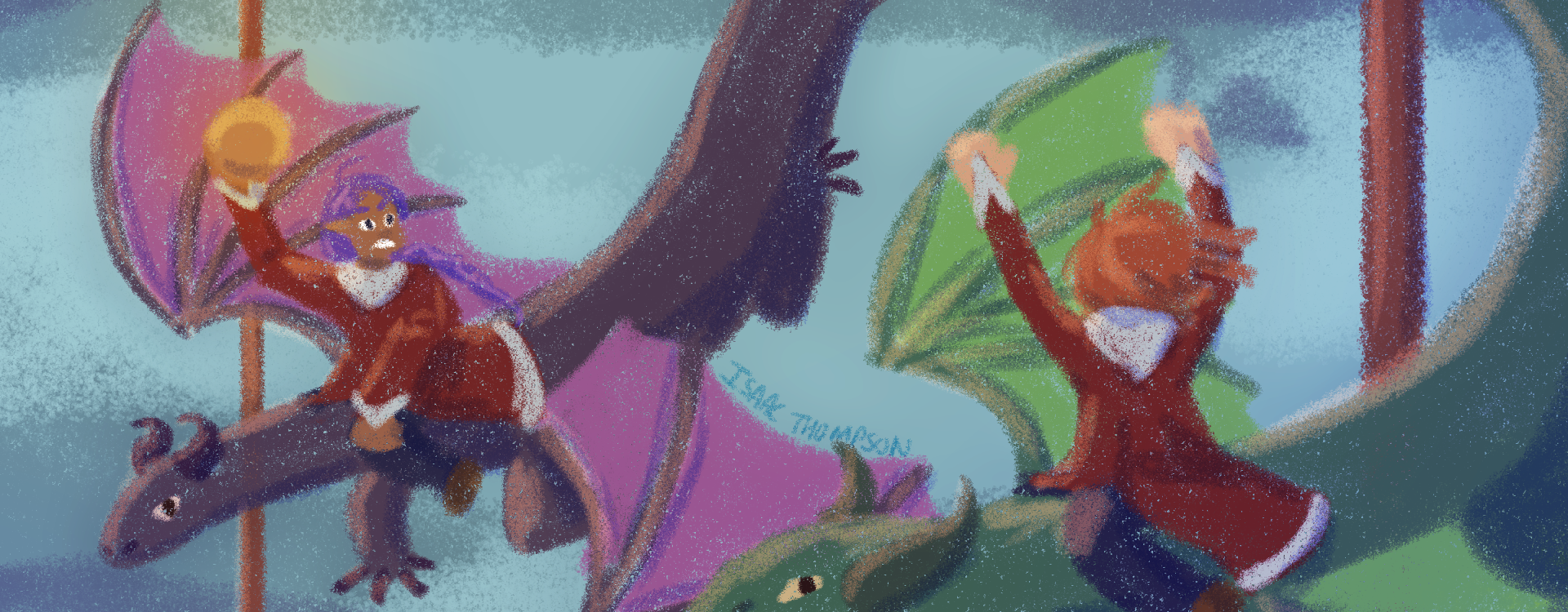Were you at the DragonGoal match last night? Wasn't it amazing?! Aiyürri intercepting that pass from the defender and dunking it through goal over his head? I wish I could be so skilled!— DragonGoal Fan
DragonGoal is a competitive team sport played predominantly in Western
Thurásin, particularly in the
Duchy of Ovük. 3-6 players on each team attempt to throw a ball through the opposing side's goal, all while on the backs of
dragons and several metres above the ground.
Rules
Two teams consisting of either 3 or 6 players take to the skies and try to score points by getting the ball through the other side's goal. How the ball can be handled has several restrictions, including;
- The ball must be held in the rider's hands, i.e. not by their dragon or sitting in their lap.
- It can only be held by the rider for 10 seconds before it must be either passed or shot.
- Dragons may manipulate the ball as long as it is not caught in any capacity.
Attempts at scoring can be made from anywhere on the field and by any player from either team, and these efforts can also be stopped by any player. Contact of any kind between players is highly discouraged, and if attempting to catch a ball would result in a collision with another player or with boundaries around the field, it is expected for players to 'cede' the ball for safety.
Matches of DragonGoal can vary in length. Most are played as 4 segments of 10 minutes, but others can be 6 or 8 segments long. This allows for riders and their dragons to rest and for substitutions to be made. The only other circumstance in which substitutions are allowed is in cases of injury, such as if a dragon collides with a boundary post or a rider falls into the catchment net.
Playing Field

DragonGoal Field by Isaac Thompson
The field in DragonGoal is quite large, usually 150 by 200 metres. An "outer bounds" of at least 20 metres is given around each side, and this larger space is where the net for catching the ball and falling players is placed. Additionally, along specified points on the outer boundary, referees will be stationed to ensure the ball does not leave the field. One is placed at each corner, but so that they are in line with one of the inner boundaries, and additional referees may be placed near the centre line.
The vertical height of the play space will vary, with a usual upper limit of 50 metres and a lower limit of 20 metres. The height of the field will affect how the goals are set up. These are placed at each end of the field, with tall posts 10 metres apart. In games where a lower height limit is used, the goals are effectively 10x20, but in taller games they can either be 10x50
or have crossbars placed to create a 10x10 square goal at the vertical middle. Regardless of size, the goals have nets tied to the outside to catch scored points and allow for easier retrieval.
While all versions of DragonGoal will have a centreline, others will further divide the field into quarters and impose restrictions of where certain players can go - for instance, an attacking player would only be allowed in the two central quarters and the opponent's end, but not their own goal quarter. Even in matches where these rules are not enforced, teams will often lightly follow it to ensure someone is always in the attacking and defending halves of the field.






This is such a brilliant article! You have really thought out the mechanics of this game. It feels so real! I love the details you added about the variants and Aiyürri Ro Eogla.